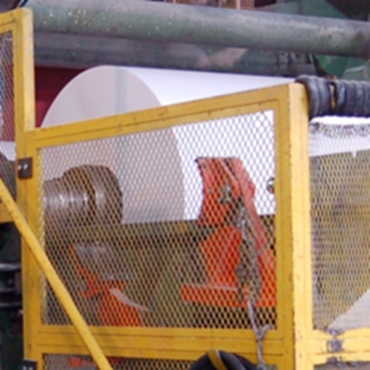Velocity is used as a vibration measurement for most condition monitoring applications because velocity is the best overall indication of machinery health for both low-speed and intermediate-speed components. Velocity measurements capture the frequency range of the most common machine faults, including imbalance, misalignment, and looseness.
In traditional walk-around vibration monitoring, it is standard practice to convert the accelerometer signal to velocity by the measurement instrumentation/software after the signal is recorded by the data collection device. In some cases, the results seen in this data has been characterized as ‘ski slope’, where low-frequency signals are lost in the integration process.
Piezoelectric velocity sensors are accelerometers with an internal integration circuit which will produce an output relative to velocity. When processing is performed at the point of data collection, it is possible to control the entire measurement to a much greater degree and eliminate external noise. With no cabling and no instrumentation to introduce noise before it is converted, the cleanest signal is possible.
Impact levels detected with acceleration can decrease over time, even though the machine condition does not improve. Acceleration is useful for monitoring high impacts and shock, which may indicate early bearing wear or lack of lubrication in gears or bearings. Velocity amplitude changes do not occur as early as acceleration but tend to increase over time for a better representation of the machine’s overall health.
Standard ISO 10816-3 guidelines exist for velocity vibration measurements and can be used to set thresholds for monitoring most rotating equipment, including the two examples below.
Velocity Sensors for Paper Machine Condition Monitoring

Steam seals in paper machine dryers can leak and produce very high frequency noise. This high frequency noise can overload normal accelerometers and “washover” low frequency information. The velocity sensor’s attenuation of high frequency signals ensures that quality data can still be taken in areas prone to steam leaks.
Vibration Monitoring of Pumps with Velocity Sensors

Many destructive pump faults appear at low frequencies and are not easily detected. Motion in terms of acceleration is very low at these frequencies. If low amplitude vibrations are measured near the electronic noise floor of the sensor (or monitoring instrument), signal corruption will occur. The common “ski slope” response results from electronic noise and can obscure the low frequency vibration information. Piezoelectric velocity sensors maximize low frequency vibration sensitivity while retaining high frequency capabilities, with a better signal-to-noise ratio.







